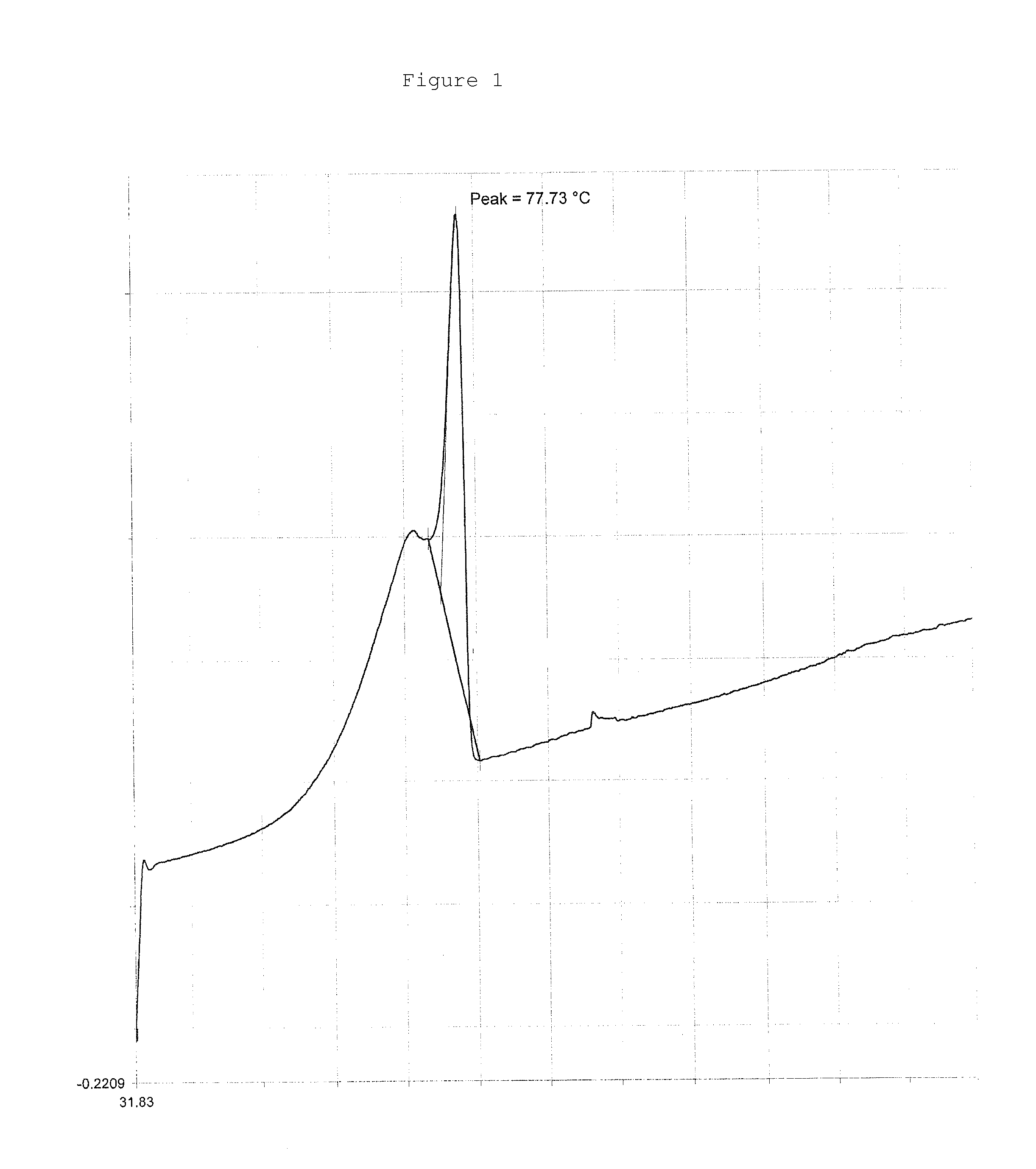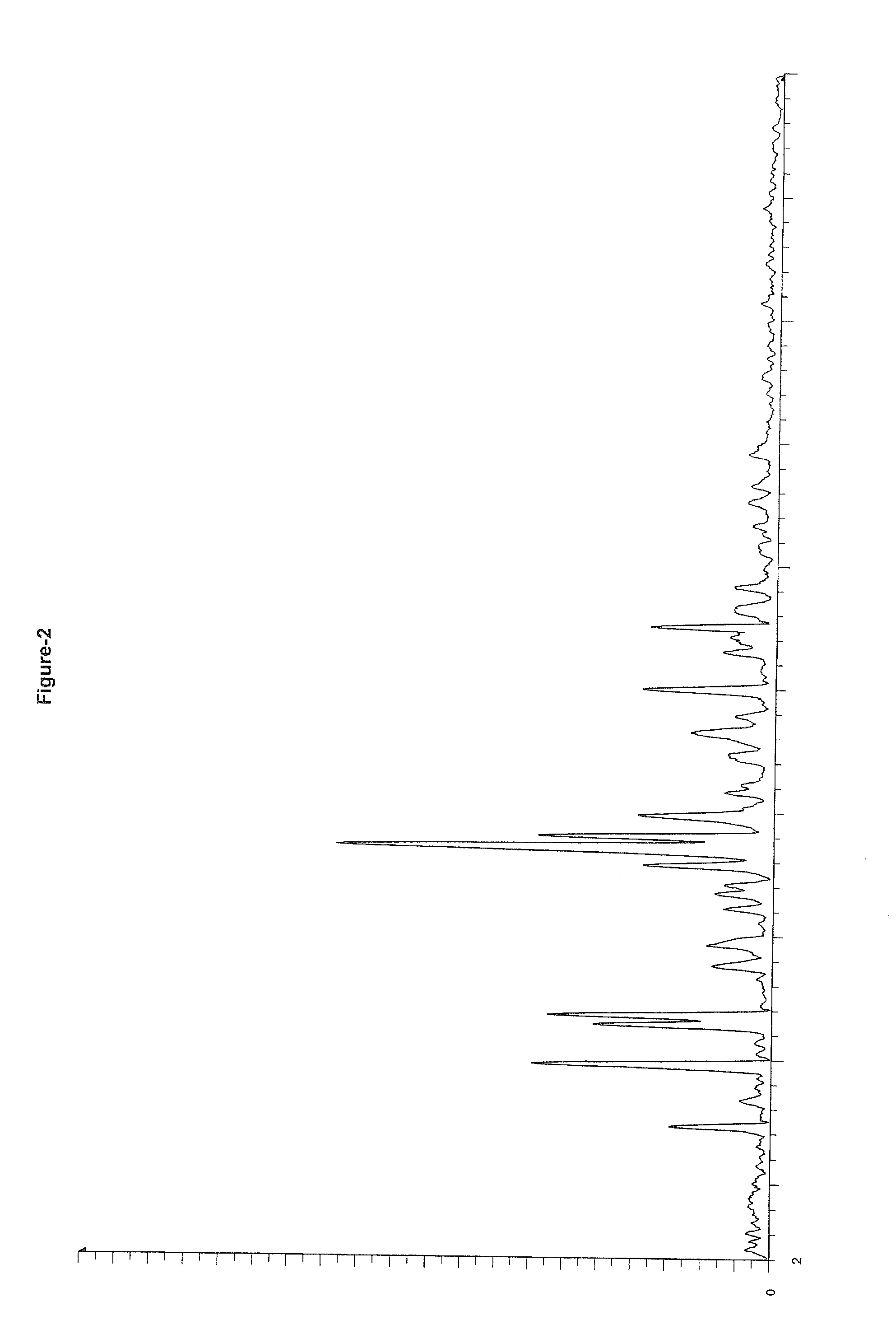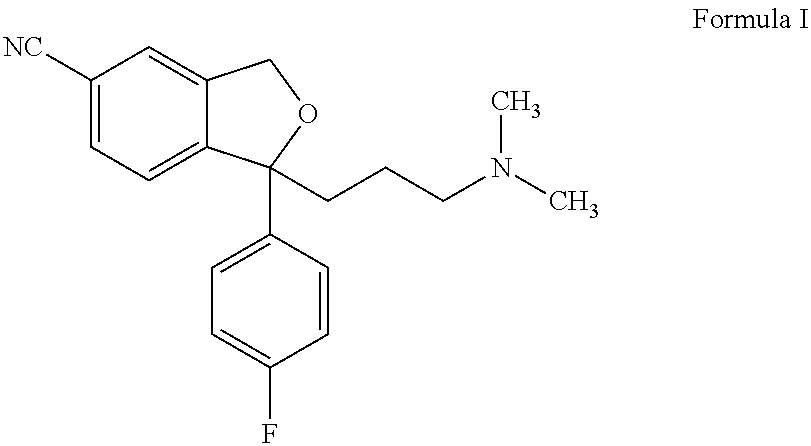Preparation of Escitalopram, Its Salts and Intermediates
- Summary
- Abstract
- Description
- Claims
- Application Information
AI Technical Summary
Problems solved by technology
Method used
Image
Examples
example 1
Preparation of (−)4-(4-(dimethylamino)-1-(4-fluorophenyl)-1-hydroxybutyl)-3-(hydroxymethyl)benzonitrile (+)DPTTA salt
a) Preparation of 1-(4-fluorophenyl)magnesium bromide
10 gm of Mg turnings was charged in a flask containing 110 ml of dry THF and heated to about 80° C. A pinch of molecular Iodine was added to the reaction contents. A mixture of THF (110 ml) and P-fluoro bromobenzene (72 gm) was added slowly to the reaction mixture at 80-85° C. for about 2 hours. The reaction mixture was stirred at reflux for about 3 hours and the whole reaction mixture was used directly in the reaction.
b) Preparation of 1[3-(dimethylamino) propyl]magnesium chloride
56 gm of KOH flakes were added in a flask containing water (170 ml) and stirred for clear solution. The solution was cooled to 0-5° C. and 156 gm of 1-[3-(dimethylamino) propyl]chloride HCl salt was charged. Separated the upper layer containing the 1-[3-(dimethylamino) propyl]chloride and kept aside. Aqueous layer was extracted with toluen...
example 2
Preparation of Escitalopram Oxalate
25 gm of (−)-4-(4-(dimethylamino)-1-(4-fluorophenyl)-1-hydroxybutyl)-3-(hydroxymethyl)benzonitrile (+)-DPTTA salt was stirred in water; pH was adjusted to about 9.0 with aqueous ammonia solution. The reaction mixture was extracted with toluene (1×200 ml, 2×100 ml) and the total organic layer was washed with water. The organic layer was further washed with saturated aqueous sodium chloride solution and final organic layer was distilled off completely to obtain 15 gm of residue.
The residue was charged in 150 ml dichloromethane and stirred. 33.5 ml of triethylamine was charged and the reaction mixture was cooled to −5° C. A mixture of dichloromethane (14 ml) and methane sulfonyl chloride (4.5 ml) was added slowly. The reaction mixture was maintained for about 3 hours. After completion, the reaction mixture was washed with aqueous saturated sodium chloride solution (100 ml). The organic layer was distilled completely and 150 ml toluene was added to the...
example 3
Purification of Escitalopram Oxalate
30 gm of Escitalopram oxalate (R-isomer content: 1.1%) was added to 60 ml methanol, stirred for about 45 minutes at about 25-40° C. The reaction mixture was filtered on filtration cloth to separate the un-dissolved solid and washed with 5 ml of methanol. 6.5 gm of wet compound (R-isomer content: 1.5%) obtained was dried and kept aside.
The methanol solution obtained as filtrate from the above filtration was heated to about 40° C. and activated charcoal was added. The reaction mixture was filtered on Hyflow® bed and washed with 20 ml methanol. The total methanol solution was distilled off completely under vacuum at 60-65° C. 10 ml of isopropyl alcohol was added and distilled completely. 75 ml of isopropyl alcohol was charged again at 50-60° C., stirred for about 20 minutes. The reaction mixture was cooled to room temperature and stirred for about 45 minutes. Filtered the solid and washed with 10 ml of isopropyl alcohol. The wet solid was dried to ge...
PUM
| Property | Measurement | Unit |
|---|---|---|
| Temperature | aaaaa | aaaaa |
| Temperature | aaaaa | aaaaa |
| Temperature | aaaaa | aaaaa |
Abstract
Description
Claims
Application Information
 Login to View More
Login to View More - R&D
- Intellectual Property
- Life Sciences
- Materials
- Tech Scout
- Unparalleled Data Quality
- Higher Quality Content
- 60% Fewer Hallucinations
Browse by: Latest US Patents, China's latest patents, Technical Efficacy Thesaurus, Application Domain, Technology Topic, Popular Technical Reports.
© 2025 PatSnap. All rights reserved.Legal|Privacy policy|Modern Slavery Act Transparency Statement|Sitemap|About US| Contact US: help@patsnap.com



